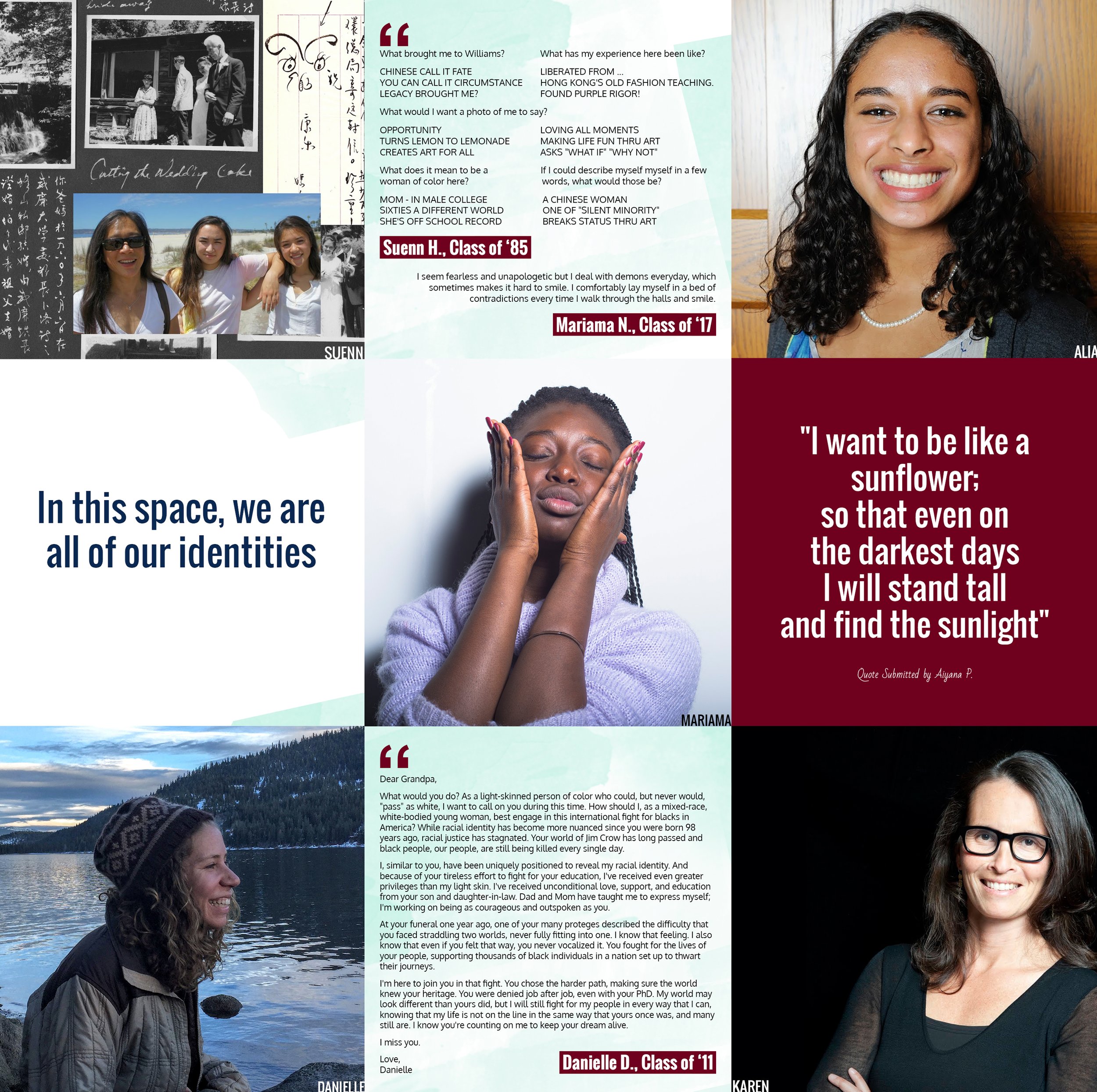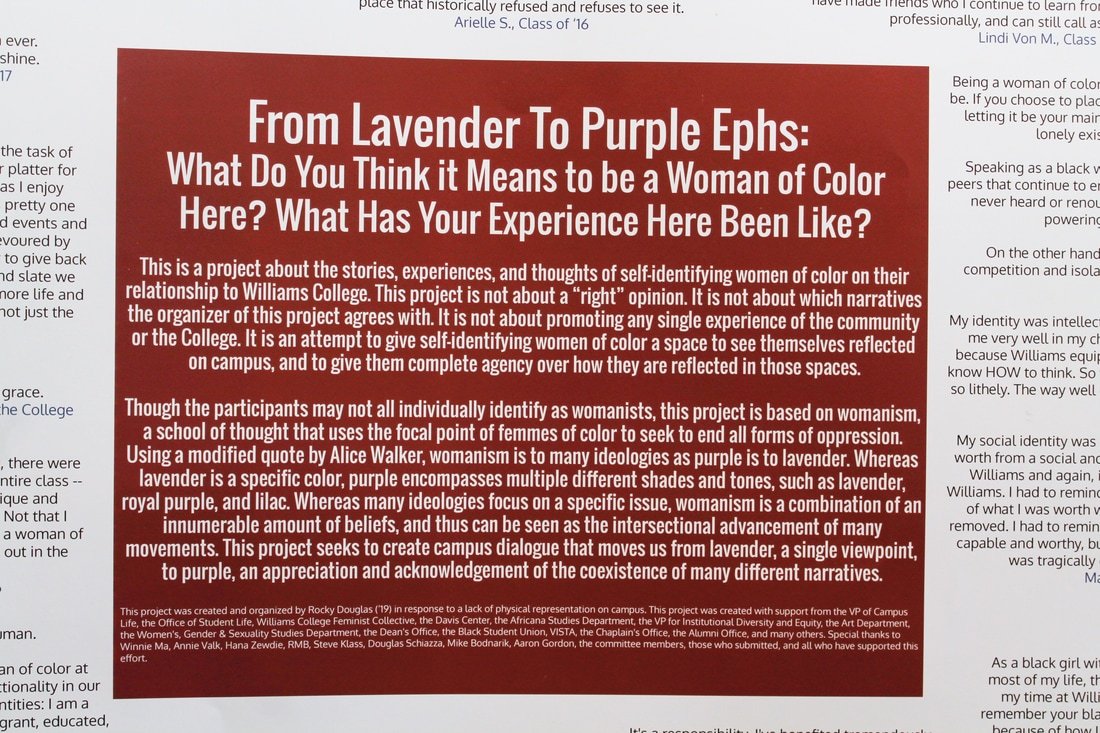From Lavender to Purple Ephs
LTPE is a series of permanent art installations at Williams College in 2016 that sought to reflect the beauty and diversity of women of color throughout the history of the college. I organized this project because, given my political framework on the importance of representation at the time, I believed the need for women of color to see themselves reflected—in their own words and in the range of their emotions—was too large to ignore. I fundraised almost $14,000 for the project, designed and managed the creation of the pieces, and oversaw all of the logistics for the installation and launch in 2016. The entire project lasted around 14 months, from the beginning of my freshman year until shortly after Homecoming of my sophomore year (2015-2016). Below, you can see excerpts of the project and learn more about the motivations behind it.

LTPE is a student-organized project about the stories, experiences, and thoughts of self-identifying women of color on their relationship to Williams College. This project is not about a “right” opinion, nor about which stories Rocky—the organizer of this project—agrees with, nor about promoting any single experience of the community or the College. It is instead an attempt to give self-identifying women of color a space to see themselves reflected on campus, and to give them complete agency over how they are reflected in those spaces.

View the Project
Three pieces are permanently installed in the Henze Lounge of Williams College and an additional framed piece is in Mission Dining Hall. There were 9 pieces temporarily installed throughout Sawyer Library that can be viewed in the Williams College archives.
This project is inspired by womanism, a school of thought that uses a focal point of femmes of color to seek to end all forms of oppression. Using a modified quote from Alice Walker, womanism is to all other ideologies as purple is to lavender. Whereas lavender is a specific color, purple encompasses multiple different shades and tones, such as lavender, royal purple, and lilac. Whereas many social ideologies focus on dismantling a specific form of oppression, womanism is a combination of an innumerable amount of beliefs, and thus can be seen as the intersectional advancement of many movements. Likewise, this project seeks to create campus dialogue that moves Williams from lavender, a single narrative, to purple, an appreciation of the paradoxical coexistence of many different narratives.











